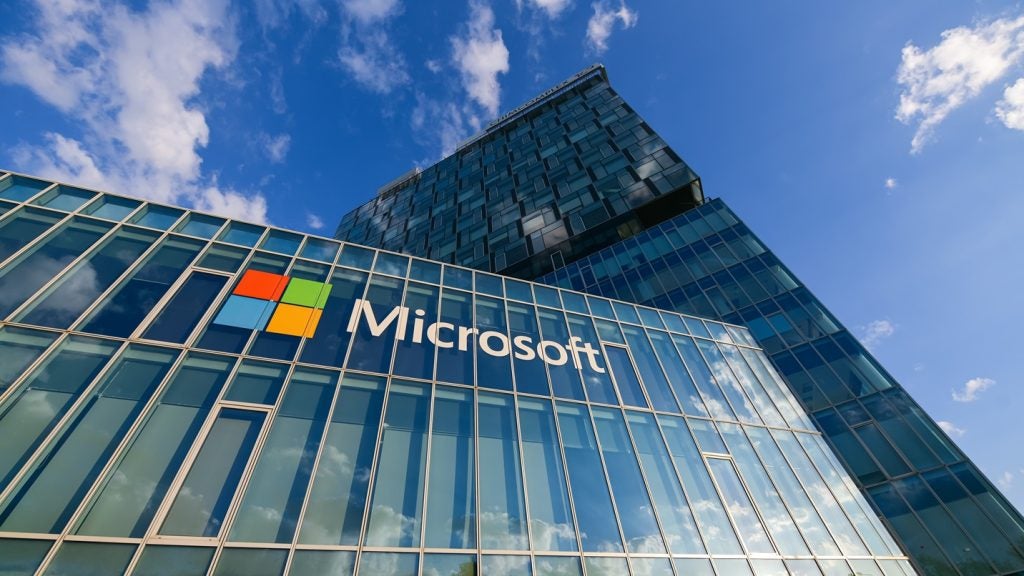
This year Vice Media found itself worth nearly $6bn. How is this possible?
Chief executive and co-founder Shane Smith says he likes to round up the $5.7bn valuation Vice got after private investment firm TPG threw $400m their way.
That’s almost the definition of an artificially inflated valuation.
Whether Vice Media is actually overvalued as a whole is hard to say.
It could be the symptom of a millennial media bubble, or Vice might just be reaping the rewards of being top of the pack.
There’s revenue coming in and, if Smith can be believed, plenty more of it in Vice’s immediate future.
How well do you really know your competitors?
Access the most comprehensive Company Profiles on the market, powered by GlobalData. Save hours of research. Gain competitive edge.

Thank you!
Your download email will arrive shortly
Not ready to buy yet? Download a free sample
We are confident about the unique quality of our Company Profiles. However, we want you to make the most beneficial decision for your business, so we offer a free sample that you can download by submitting the below form
By GlobalDataTraditional media vs. new media
Traditional media companies are certainly on the lookout for new ways to trap the attention of millennials, whoever they are.
In 2015 general entertainment giant Disney doubled down on its previous investment in Vice, ploughing $200m into the company to bump its stake up to 20 percent.
Fox bought in for $70m in 2013 (though has not shown much interest since).
Marketing giant WPP bought a slice in 2011, as the lines began to blur between online video and online advertising, and now controls around 8.5 percent of the company,
Traditional media’s interest in something like Vice is in no way mysterious.
If you look at the Conde Nast’s and so on, they really don’t have products for millennials,” said Rob Kniaz of Hoxton Ventures, an early-stage investor that made its name getting in close to the front on Facebook. “So for these people that have one hundred plus years of history of owning every demographic, this is the first time in certainly a lot of those people’s careers where they don’t have product for a large part of the population.
Without a solid definition, fixed address, stable income, landline telephone or consistent moral framework, the millennial generation are notoriously hard to market to.
Setting a demographic merely by an age bracket creates a hopelessly broad category, as millennials themselves like to complain.
The same criticism would apply to the post-war generation, of course.
George W Bush and Jerry Garcia of the Grateful Dead were both technically Boomers, which doesn’t really tell you much about Boomers.
In many ways, this new generation is no different from those previous: diverse, with varying interests and values, lumped together in only the most reductive sense.
The real difference between the millennials of today and the boomers, slackers, and punks of yesteryear is an external one: choice.
It’s easy to forget how recently your choice of entertainment was limited to what other people wanted to play you.
Many people who grew up in the 90s will remember Harold Bishop and Paul Robinson solely because the soap opera Neighbours was scheduled before the much more popular animated comedy The Simpsons.
For the same reason, many would sit through the 6:30pm news until Futurama – another popular comedy show – came on at 7pm.
All that time networks could sit comfortably in the knowledge that advertisers were getting the eyeballs they so dearly crave.
Even in the 80s, whose defining image was scowling teenagers holed up in their room with “their” channels, the options were limited.
Kids may have slunk away from their parents’ fodder but there’s no getting around it that those alternative channels were provided from the same service.
Even the internet for much of its existence did not pose such an existential threat.
BBS and Usenets may have been exciting (or so I’ve been assured) but the internet couldn’t deliver streaming video, everyone’s favourite format, nor did digital tools exist to bring production budgets within the reach of independent creators.
Quality was low and buffering times were high.
There is little need to explain how the media landscape has changed to what lays before us now.
While older generations argue over cord-cutting, so-called digital natives barely even know what the cord is.
The modern media consumers
Consumers of modern media not only have access to whatever content streams they want, they also have the freedom to switch between them at will.
Snap – the creator of disappearing messaging app Snapchat — claims to fix their user’s attention for 30 minutes per day.
That may sound impressive to the so-called Ritalin generation, but it’s nothing compared to the seven hours a day the average household consumed in 1996.
This is the existential quandary media companies find themselves in.
As eyeballs wander aimlessly over multiple screens the collective attention is fractured, and advertising effectively gets harder.
Think about it, how often have you switched over to a different tab while Youtube plays an ad?
Advertisers value an attentive audience and these days it’s impossible to say with any certainty that anybody is actually paying attention.
Advertisers then are far less willing to pay a premium for online real estate.
This puts the big media companies in a difficult spot.
What’s required to keep millennials’ attention is speed, agility and flexibility, traits Disney and Time Warner are not known for.
Decades have passed in which dominance was a numbers game.
In that time those entrusted to invest in the next generation of entertainment failed to build up the kinds of muscles they’re desperately trying to flex now.
There really aren’t audiences for millennials any more, the same way you could buy Time magazine in 1950 or whatever and reach everyone that was in the boomer demographic” said Kniaz. “Everything’s so fractured, they’re used to having these turnkey deals where you buy a few big name properties, you pat yourself on the back, you pay yourself a bonus and go to the golf course.
So what do you do when those turnkey deals have dried up?
The problems with investing in new media
It might be for media companies there’s no choice but to plough ahead into whatever remains.
For a company obliged to invest in the next generation of media, the weakness of that generation is kind of irrelevant. Companies aren’t allowed to retire but must force – or at least try – to reinvent themselves.
Why old media companies want in on companies like Vice, Snap, and Buzzfeed is no mystery. What is unresolved is whether these companies are actually worth the money.
IG Group senior market analyst Chris Beauchamp told Verdict:
I think you have seen a lot of questions over whether new media companies can sustain these kind of valuations or whether, to be sustainable, actually they should be worth a lot less. At the moment though there’s clearly a lot of appetite among investors for access to the sorts of companies that do have access to those fabled millennials. It carries a lot of cache… and the advertising that goes with it.
Beauchamp said a real sign of a new media bubble is not when proven companies such as Vice or Snap go public, “it’s when the smaller ones start to rush, then you get the sign of the bubble like you did get in 2000.”
In the Dotcom bubble, said Beauchamp, there were “a lot of companies just rushing to IPO because they knew the time was sort of right and they knew they could the funding they needed.”
Kniaz said:
Not many venture capitalists (VCs) will go anywhere near media nowadays. There’s this problem that once you get to the leading brand then it’s a safe bet, but the streets are littered with content companies that wound up missing a window or not being clickbaity enough or not having quite the right product, and investors lose all their money because there are no good buyers in between.
If what you’re building turns out to be the #10 millennial brand, Kniaz explains, there’s very little chance your brand will gain traction, make money and avoid folding.
This is a problem for VCs, who don’t really care what the company is trying to do. They tend to buy into a property only to sell it on later. That’s where the margins are.
So I can barely think of any VCs now that even do any content or media related deals anyway. Vice is in a fairly strong position because there’s always going be someone who wants to buy that asset. Maybe if the price goes down, the buyer sees it as a buying opportunity. I think Conde Nast have such a big footprint, they’re inevitably going to do deals and they would probably see it as a buying opportunity.
This is what companies like TPG are counting on.
The hope is that by pushing Vice as the millennial brand, with the confidence of its investment serving as a kind of advertisement in itself, further driving up the valuation, a $400m stake can turn into $1bn or $2bn when one of the dinosaurs comes along and scoops Vice up.
Any company – especially to private equity — is not worth anything other than what someone else will pay for it.
If that price is derived from the revenue growth and projected profit of a company, it’s common sense. And even if it’s not, that doesn’t mean it’s not a good investment.







